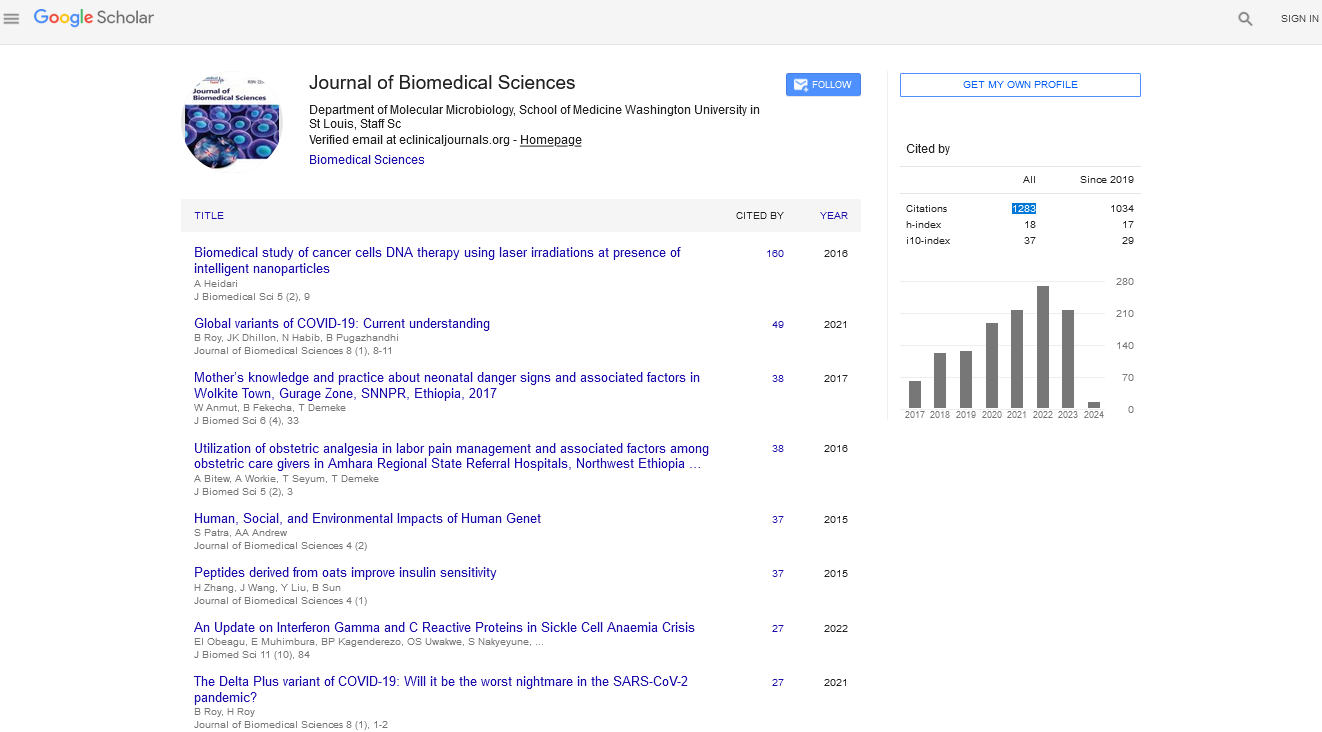Commentary - (2024) Volume 13, Issue 3
Biostatistics: Enhancing Healthcare through Data Analysis
Vimla Castelli*
Department of Biostatistics, University of Michigan, United States
*Correspondence:
Vimla Castelli, Department of Biostatistics, University of Michigan,
United States,
Email:
Received: 14-May-2024, Manuscript No. IPJBS-24-14877;
Editor assigned: 16-May-2024, Pre QC No. IPJBS-24-14877 (PQ);
Reviewed: 30-May-2024, QC No. IPJBS-24-14877;
Revised: 10-Jun-2024, Manuscript No. IPJBS-24-14877 (R);
Published:
18-Jun-2024
Description
Biostatistics, a crucial branch of statistics, plays a fundamental role in healthcare and biomedical research by applying statistical methods to biological and medical data. It provides the tools and techniques necessary to analyze complex data sets, draw meaningful conclusions, and make informed decisions in the fields of public health, epidemiology, clinical trials, and genetics.
At its core, biostatistics aims to understand patterns, trends, and associations within biological and health-related data. By collecting, summarizing, and interpreting data, biostatisticians contribute to the advancement of medical knowledge, the development of new treatments, and the improvement of healthcare outcomes.
Applications of biostatistics
Biostatistics has a wide range of applications across various domains:
Public health surveillance: Biostatisticians analyze public health data to monitor disease trends, identify outbreaks, and evaluate the effectiveness of interventions. Through techniques such as spatial analysis and time series modeling, they contribute to the prevention and control of infectious diseases, chronic conditions, and other public health threats.
Epidemiological studies: Epidemiology, the study of the distribution and determinants of diseases in populations, relies heavily on biostatistics to design studies, calculate measures of disease risk, and assess the impact of risk factors. Biostatistical methods such as cohort studies, case-control studies, and meta-analysis are used to investigate disease causation, identify preventive strategies, and inform public health policy.
Clinical trials: Biostatistics plays a critical role in the design, analysis, and interpretation of clinical trials, which are essential for evaluating the safety and efficacy of new drugs, treatments, and medical devices. By randomizing participants, controlling for confounding variables, and calculating sample sizes, biostatisticians ensure that clinical trials produce reliable and statistically valid results.
Genetic studies: In genetics and genomics research, biostatistics is used to analyze DNA sequences, identify genetic variants, and assess their association with diseases or traits. Genome-Wide Association Studies (GWAS), linkage analysis, and heritability estimation are common biostatistical methods used to unravel the genetic basis of complex diseases and inform precision medicine initiatives.
Challenges and considerations
Despite its importance, biostatistics faces several challenges and considerations:
Data quality: Biostatistical analyses depend on the quality and integrity of the data being analyzed. Missing data, measurement errors, and biases can affect the validity and reliability of statistical results, requiring careful data cleaning and validation procedures.
Confounding variables: In observational studies, confounding variables can distort the association between exposure and outcome, leading to spurious conclusions. Biostatisticians employ techniques such as multivariable regression and propensity score matching to control for confounding and minimize bias.
Causality vs. association: Establishing causality from observational data can be challenging due to the presence of confounding factors and other sources of bias. Biostatisticians use causal inference methods and sensitivity analyses to strengthen causal claims and assess the robustness of study findings.
Ethical considerations: Biostatistical research involving human subjects must adhere to ethical guidelines for informed consent, privacy protection, and confidentiality. Ensuring the ethical conduct of research and the responsible use of data is essential to maintain public trust and integrity in biostatistics.
Future directions
Looking ahead, the future of biostatistics holds great promise:
Big data analytics: With the advent of electronic health records, wearable devices, and genomic data, biostatistics is increasingly focused on analyzing large-scale, high-dimensional datasets. Advanced computational techniques, machine learning algorithms, and data visualization tools are being developed to extract valuable insights from big data and improve healthcare delivery.
Precision public health: Biostatistics is driving the emergence of precision public health, where interventions are tailored to the individual characteristics of populations or subgroups. By integrating diverse sources of data, including genomic, environmental, and social determinants, biostatisticians can identify at-risk populations, target interventions, and optimize public health strategies.
Personalized medicine: Biostatistics is at the forefront of personalized medicine, where treatments are tailored to individual patients based on their genetic makeup, biomarker profiles, and other personalized factors. By analyzing patient data and predicting treatment responses, biostatisticians contribute to the development of more effective and targeted therapies.
Reproducibility and transparency: Ensuring the reproducibility and transparency of research findings is a priority in biostatistics.Open science practices, including data sharing, pre-registration of study protocols, and transparent reporting of statistical analyses, are essential for advancing scientific knowledge and building trust within the research community.
In conclusion, biostatistics plays a critical role in advancing healthcare and biomedical research by providing the statistical methods and tools necessary to analyze complex biological data, identify patterns, and make evidence-based decisions. As technology continues to evolve and the volume of data grows, biostatistics will remain essential for translating data into actionable insights that improve public.
Citation: Castelli V (2024) Biostatistics: Enhancing Healthcare through Data Analysis. J Biomed Sci Vol:13 No:3





